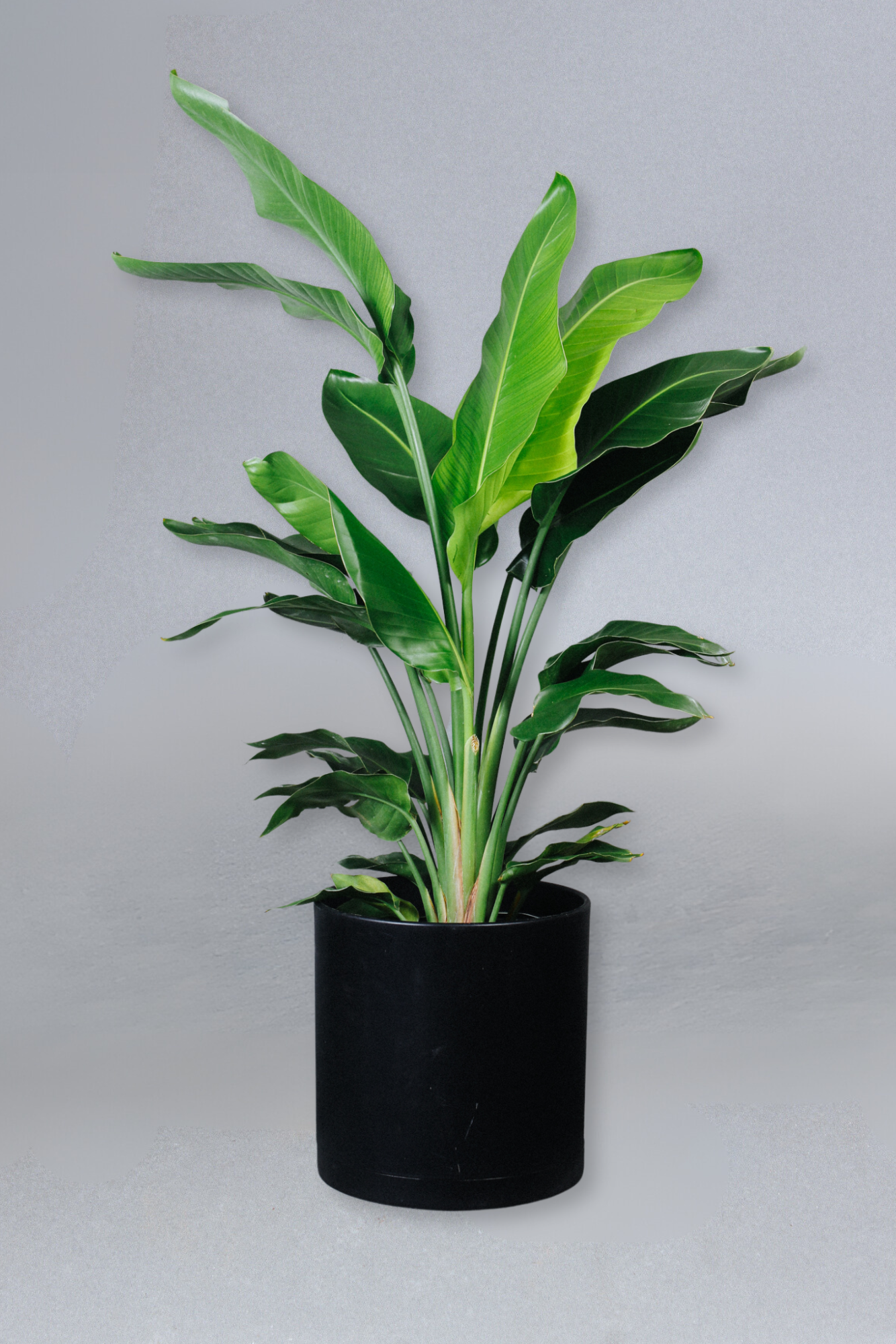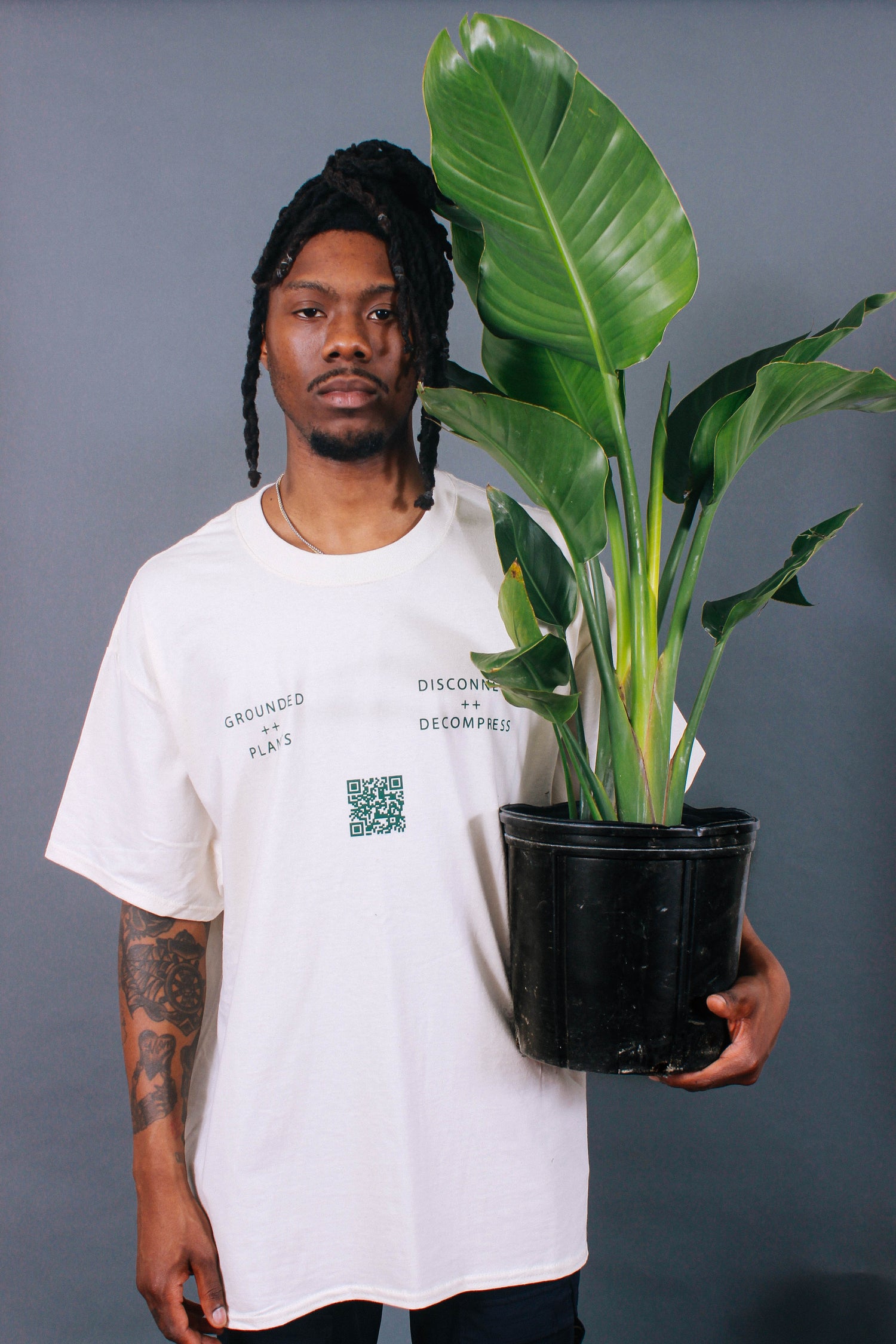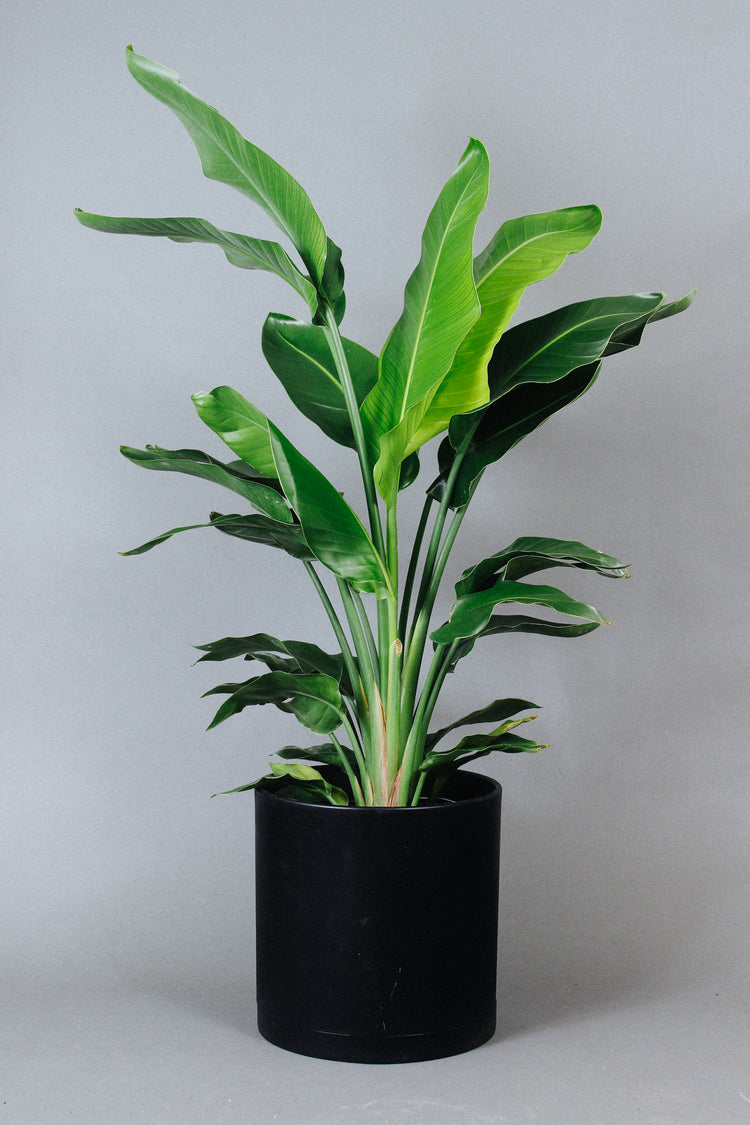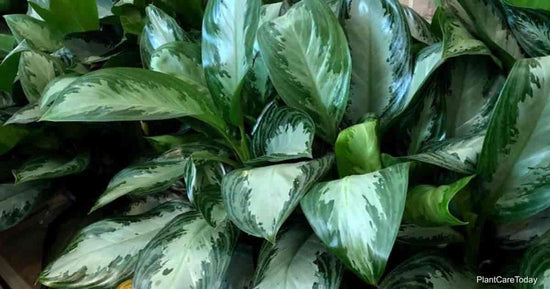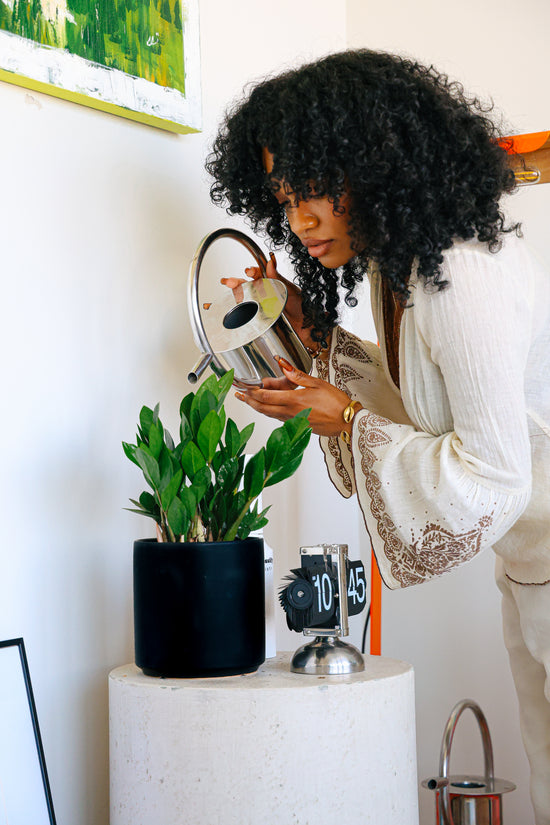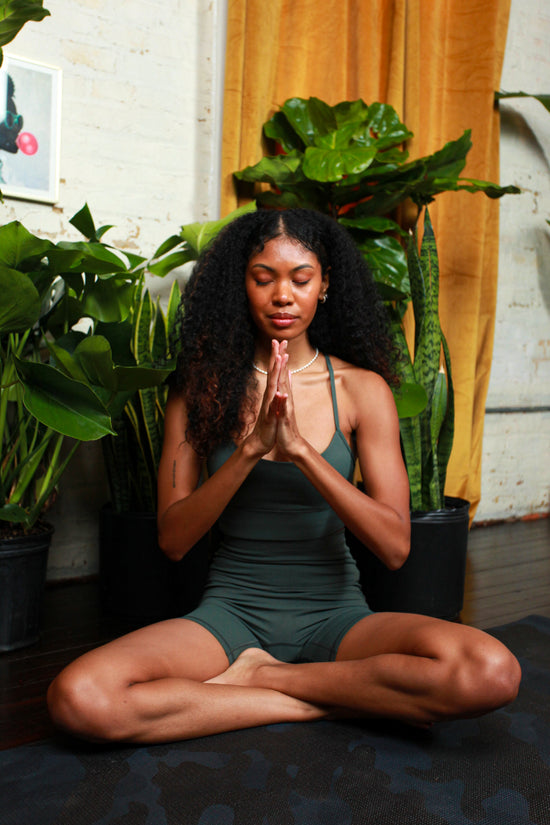A complete guide to caring for a healthy Bird of Paradise inside your home.
Maintenance: Intermediate | Climate: Warm + Humid | Light: Bright + Indirect | Watering: Semi-frequent | Pet Safe: No
CHARACTERISTICS
Native to tropical areas of South Africa, this luscious plant grows up to 30 feet tall in its natural environment, even blooming colorful flowers that resemble birds. Indoors, these grow about 6-8 feet tall with upright, towering stems and huge leaves. It's the perfect green companion for your indoor jungle.
LIGHT
The Bird of Paradise prefers bright, indirect light. They do well placed near a bright window, filtered by blinds or sheer curtains. Well-lit conditions produce more robust growth but be careful to keep it away from direct sunlight that can scorch the green color from the leaves.
WATER
Water generously once the top 50% of soil has dried, allowing excess water to drain out. These tropical plants prefer slightly moist soil, though they can withstand brief droughts when mature and well-established. Reduce watering frequency during fall and winter to avoid root rot. To maintain the quality of your soil and leaf appearance, we do not recommend tap water. Check out our list of preferred water types!
AIR
The best way to keep your BOP healthy, happy, and stress-free is to mimic a tropical environment in your space. To reproduce this, maintain temperatures between 65º-85º, avoid air vents, and create a humid environment humidity by:
- Misting the leaves 3-4x per week with non-tap water
- Adding a humidifier nearby
- Making a pebble tray that lives underneath the pot
The Bird of Paradise makes a wonderful outdoor plant in the right region and climate. Offer it a sunny spot with partial shade. If your area or season dips below 60º, this tropical plant will begin to show signs of stress. Likewise, very hot temperatures won't suit it will. Plants should slowly transition between indoor and outdoor environments to avoid shock.
Tip: Check and wipe the leaves to remove pests before bringing outdoor plants back indoors!
PLACEMENT
The Bird of Paradise is known as a symbol of paradise and freedom. Bask in the joyful, grounding energy it brings to your safe space. Not only do these plants add a stunning natural element to the room, they also offer air-purifying and wellness benefits to improve your mental functions and boost your mood.
POTTING & SOIL
A ceramic planter with a drainage hole is crucial to maintain an ideal moisture balance for this plant. When repotting, keep it in a planter of the same size or no more than 2 inches larger. To encourage larger growth, pot up in size every 1-2 years. Large mature plants can be repotted less often.
A well-draining soil that also retains moisture is key for root health. Look for soil that includes amendments such as coco coir, perlite, sand, or bark. You can also add these ingredients to any standard potting mix yourself.
SEASONAL CARE
Bird of Paradise plants aren't too fussy in the winter but here are some pointers to keep in mind:
- Maintain comfortable temperatures and moderate humidity levels through fall and winter.
- Move your plant a few feet away from cold or drafty windows.
- Water less frequently, and be sure to schedule it only once the soil has dried about 75%. Brief droughts during winter are okay.
- Avoid repotting, fertilizing, and other drastic changes that stress the plant.
- Check the underside of the leaves and stem crevices for pests.
As a kind gesture, the large leaves would benefit from regular dusting. This improves shine as well as photosynthesis, giving the plant more fuel for its winter rest. Let this routine be a reminder to be gentle with yourself, too.
PRUNING & PROPAGATION
These plants are best propagated by division - a method of dividing the plant into 2+ sections at the roots.
Supplies for Propagating:
- Clean + sharp knife
- Healthy Bird of Paradise with 2+ growth sites (individual plants growing from the soil)
- Separate pots
- Soil
Steps:
- Carefully remove the entire plant from its pot and loosen the soil around the root ball.
- Decide section you want to divide at the roots.
- Using your hands or a clean knife, separate sections at the roots. Make sure your tools are sharp and disinfected.
- Place each divided plant into its own planter with soil.
- Water and let the plant rest! It may experience some shock.
Note: Divide with care and know that roots are strong enough to withstand handling and even some injury!
COMMON ISSUES
This intermediate-level plant may test your skills, but when changes are spotted early, your green thumb can understand its needs quickly. Some common issues your BOP might experience are:
YELLOW LEAVES
Yellow leaves can be a result of many things, most common being overwatering or poor drainage, causing the soil to stay wet. Start by checking your soil moisture and watering frequency. Other causes for yellow leaves on the Bird of Paradise are low light, pest or fungus infestations, nutrient deficiency, and age. Old leaves are the lowest on the plant, closest to the soil. These slowly fade to yellow or even brown as new growth comes in.
BROWN LEAVES, TIPS, OR EDGES
Dry, crispy leaves are a sign of dry soil, low humidity, leaf scorch from direct sunlight, or fertilizer burn. Start by assessing the soil moisture, lighting, and how much humidity you’ve provided. Be sure to keep it out of direct light and carefully dilute fertilizer, avoiding use during fall and winter.
CURLING LEAVES
Bird of Paradise leaves curl inward when the soil or air is very dry. Leaves can also curl in a droopy appearance as a result of temperature stress, pest infestations, and age. These large leaves do naturally develop a slight droop due to their long shape and size.
DROOPING, LIMP LEAVES
Drooping leaves are common sign of stress and call for help. This can happen when the BOP is under or overwatered, while adjusting to an environmental change, pest and fungus infestation, or when your plant needs a bigger pot. Check the soil moisture and assess its environment for temperature and humidity. If it just went through a change (such as a move or new pot), give it some time to adjust.
RIPPED LEAVES
The Bird of Paradise naturally develops a few rips in the leaves to allow sunlight to trickle down to lower leaves. This adaptation has also helped them sustain strong environmental factors such as strong winds and rain. If you notice a lot of rips on the leaves of your Bird of Paradise, it's likely a sign that the air is too dry. If new growth opens up with a rip, this is almost always the case. Give that plant a tropical environment with some extra humidity to keep it looking its best!
PRO TIPS
- As a kind gesture, the large leaves would benefit from regular dusting.
- Water less frequently during the winter, after the soil has dried about 75%. Brief droughts during rest season are okay.
You're a pro now! If any of your questions haven't been answered, let us know!
@groun.ded | customerservice@feelgrounded.com | Office Hours



